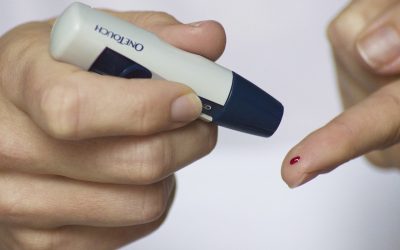It is hard to separate diabetes from other forms of diseases in the pediatric population. Obesity, race, and family background are risk factors for this condition, and puberty is a predisposing age for the development of diabetes due to physiological insulin resistance. A kid with diabetes will very quickly get unwell, and it can be life-threatening too!
Early-onset T2DM is more associated with shorter insulin requirement length, diabetic complications, and cardiovascular disease among the two forms of T2DM than adult-onset T2DM and T1DM. The critical management priorities include the normalization of hyperglycemia, the facilitation of lifestyle changes, and the management of comorbidities linked to diabetes and obesity.
If your child has type-1 diabetes, by maintaining his blood sugar levels within a target range, he can successfully control his condition and live everyday life. But it’s a bit different for Type-2. This article will make you familiar with the circumstances of your child’s symptoms and lead you to the solution precisely.
Demographics of Type-2 Diabetes in Children
In tandem with the rise in the rate of obesity, the prevalence of T2DM in children and adolescents has risen worldwide.16-18 In America, the incidence of T2DM was approximately two per 100,000 person-years in patients under the age of 17 years, with a 27 percent increase in the average annual adjusted overall incidence between 2002 and 2020.
It is no coincidence that this physiological insulin resistance associated with puberty corresponds with the peak age of presentation of early-onset T2DM and that pre-pubertal T2DM is far less common. Some children aged four years or younger with T2DM and 190 cases of children aged 5-9 years with T2DM between 2002 and 2020 were among the 1.2 million young people in the Diabetes Study quest.
Modifications Needed mostly
While lifestyle (dietary and exercise) improvements are critical to T2DM management, with lifestyle changes alone, less than 10 percent of young people with T2DM can meet their glycaemic goals. This could be due to high follow-up loss rates, socioeconomic status variables, and increased associated rates of depression.36 It is essential to include an experienced dietitian.
Dietary recommendations can start by removing soft drinks and juices containing sugar, increasing fruit and vegetable intake, managing portions, and modifying family dietary behavior, such as eliminating unhealthy household food. It is well known that daily exercise is associated with decreased insulin resistance and improved insulin sensitivity in young people who are overweight or obese, regardless of the status of T2DM, without calorie restriction or weight loss.
The diabetes treatment strategy’s significant aspects are activity guidelines, such as moderate-intensity exercise for 60 minutes every day and a decrease in screen time to less than two hours daily. There is, however, little evidence regarding the efficacy of lifestyle changes with T2DM in youth. While observational studies suggest that higher activity levels are associated with better glycaemic control in T2DM youth, this finding was not supported by the only large-scale therapeutic trial to assess lifestyle therapy in T2DM children.
The study found that, in addition to metformin monotherapy, 24 months of intense lifestyle improvements (200-300 minutes of moderate-to-vigorous-intensity exercise per week and 1200-1500 daily calorie intake) did not enhance long-term glycaemic control after 24 months of follow-up.
Conclusion
T2DM in children and adolescents is a significant medical problem that is more aggressive, more difficult to detect, and has fewer available treatment options than the adult-onset type. High rates of complications linked to diabetes and obesity are also associated with it. To streamline their treatment to improve compliance and optimize performance, a family-based strategy is needed to address all medical, lifestyle, and psychosocial dimensions of care comprehensively.







